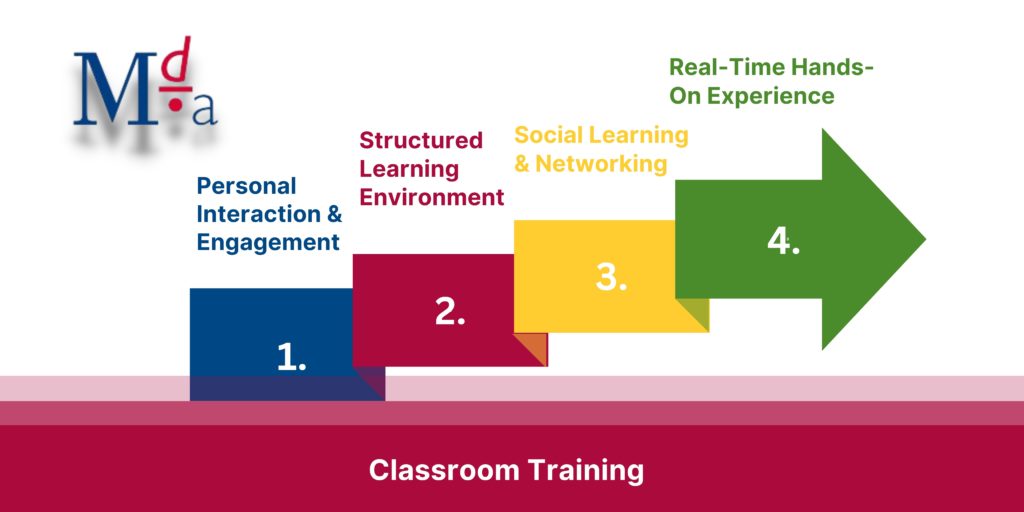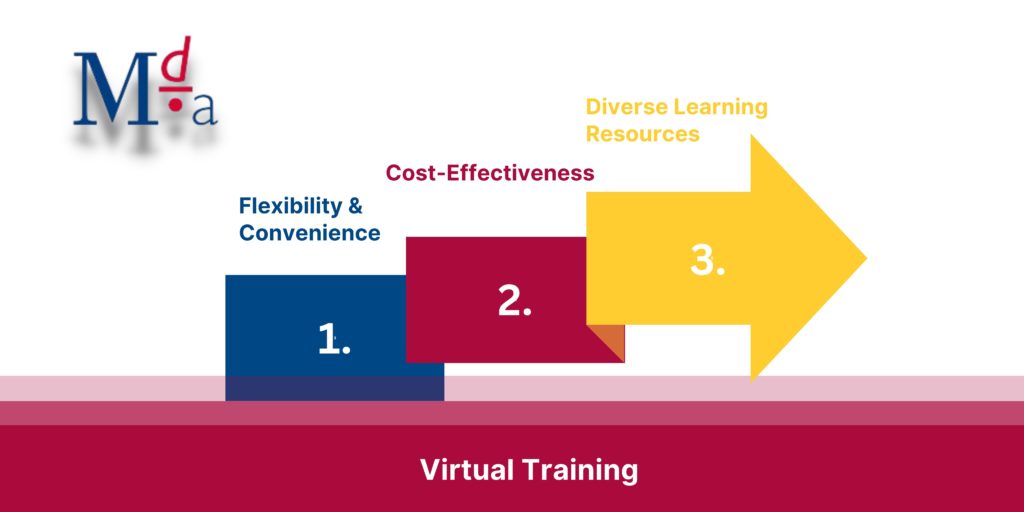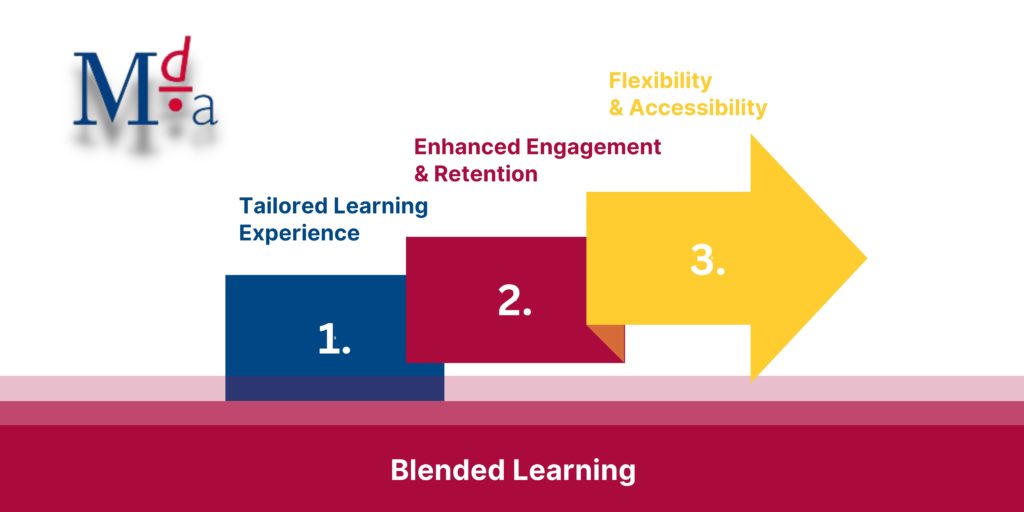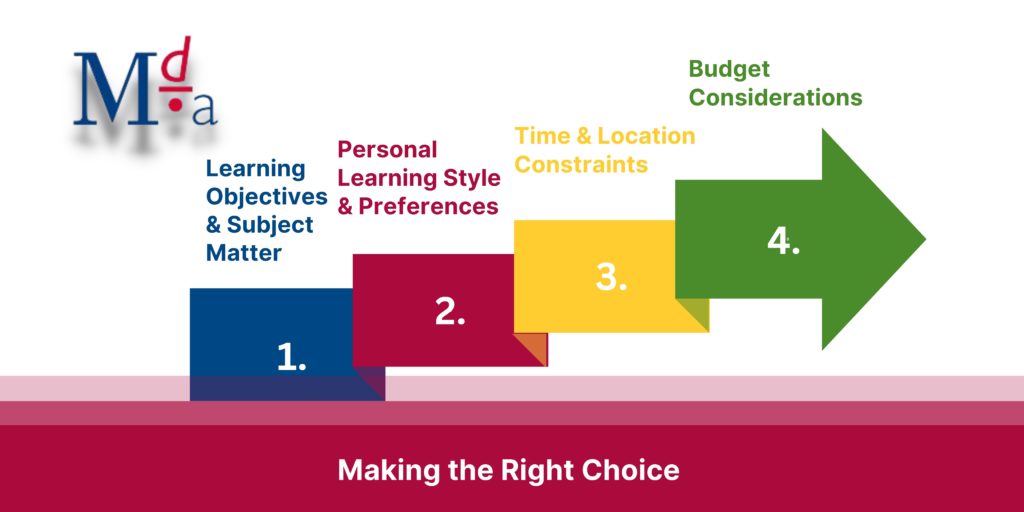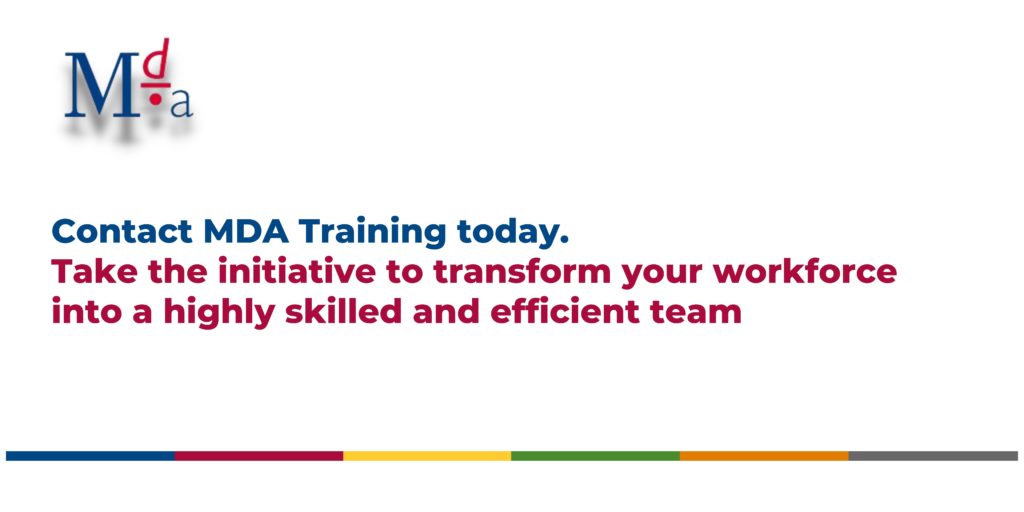Classroom vs. Virtual Training: As the world advances and technology continues to shape various aspects of our lives, it’s no surprise that education and training methods have evolved as well. Traditional classroom training has been the norm for centuries, but with the rise of the internet and digital connectivity, virtual training has gained significant popularity. In this blog, we will explore the differences between classroom and virtual training, the benefits and drawbacks of each approach, and help you make an informed decision to find the right fit for your learning needs.
1. Understanding Classroom Training
Classroom training is the conventional approach to education, where learners physically attend a designated location, such as a school, college, or training centre, to participate in face-to-face sessions with an instructor or facilitator. This method has been tried and tested for generations and has several unique advantages:
1.1. Personal Interaction and Engagement
One of the primary advantages of classroom training is the level of personal interaction it offers. In a traditional classroom setting, learners have the opportunity to engage directly with the instructor and their peers, creating a dynamic learning environment. This face-to-face interaction fosters a sense of connection and community, making the learning process more enjoyable and effective.
In a classroom, learners can ask questions, seek clarifications, and engage in lively discussions with their instructors and classmates. The immediate feedback received from the instructor allows learners to address any misconceptions or doubts promptly, leading to a deeper understanding of the subject matter.
The group dynamics in a classroom also play a vital role in promoting engagement. Learners can collaborate with their peers on group projects, share diverse perspectives, and learn from each other’s experiences. Such social learning opportunities can enhance critical thinking and problem-solving skills, making the learning journey more enriching.
Furthermore, in a classroom environment, instructors can gauge the attentiveness and comprehension of learners through non-verbal cues such as body language and facial expressions. This insight enables them to adjust their teaching methods and pace to cater to the diverse needs of the students effectively.
For learners who thrive on interpersonal interactions and prefer a structured, scheduled learning environment, classroom training can be the ideal choice. The sense of camaraderie and immediate feedback received in the classroom can boost motivation and foster a deeper commitment to the learning process.
1.2. Structured Learning Environment
Classroom training provides learners with a highly structured and organised learning environment. Unlike self-paced online courses, which might lack a strict schedule, classroom training follows a predetermined timetable with fixed sessions and assignments. This structured approach offers several advantages:
Clear Progression: In a classroom setting, learners know exactly what topics will be covered and when. The curriculum is designed to progress logically, building upon foundational concepts before moving on to more advanced ones. This clear path of learning helps students understand the subject matter in a systematic manner.
Consistent Learning Pace: With set class timings and a predefined syllabus, learners can maintain a consistent learning pace. This structure ensures that all students cover the same material within a specific timeframe, reducing the risk of falling behind or skipping essential topics.
Accountability: Classroom training instils a sense of accountability in learners. Regular class attendance and participation become essential, encouraging students to stay on track and actively engage with the course material.
Deadlines and Assignments: In a structured classroom environment, instructors often assign homework, projects, and assignments with specific deadlines. These tasks provide learners with opportunities to apply their knowledge and receive feedback from their teachers, enhancing their understanding of the subject.
Real-time Support: The structured nature of classroom training allows learners to receive immediate support from instructors. If they encounter difficulties or have questions, they can seek clarification during class sessions or through designated office hours.
Discipline and Time Management: Classroom training instils discipline and time management skills in learners. They learn to adhere to schedules, manage their study time effectively, and balance their academic commitments with other aspects of life.
Overall, the structured learning environment of classroom training provides learners with a well-defined framework for their educational journey. It helps them stay focused, organised, and accountable, ensuring they receive a comprehensive education in the subject matter.
1.3. Social Learning and Networking
In a traditional classroom setting, social learning plays a significant role in the overall educational experience. Here are some key benefits:
Collaboration and Peer Interaction: Classroom training provides ample opportunities for learners to interact with their peers. Group discussions, team projects, and collaborative activities foster a sense of camaraderie and teamwork, allowing students to learn from one another’s perspectives and experiences.
Diverse Perspectives: In a classroom, learners come from different backgrounds, cultures, and experiences. This diversity enriches the learning process by exposing students to a wide range of perspectives, ideas, and problem-solving approaches.
Constructive Feedback: Social learning in the classroom allows for immediate feedback from both instructors and peers. Learners can receive constructive criticism and suggestions, which helps them improve their understanding of the subject matter and refine their skills.
Networking Opportunities: Classroom training provides a platform for students to network with their classmates and instructors. These connections can be valuable in the future, as they may lead to professional opportunities, job referrals, or collaboration on future projects.
1.4. Real-Time Hands-On Experience
Real-time hands-on experience is a significant advantage that classroom training offers over virtual training. In a traditional classroom setting, learners have the opportunity to engage in practical, hands-on activities that provide a deeper understanding of the subject matter. Here are some key benefits of real-time hands-on experience in classroom training:
Practical Application: Classroom training allows learners to apply theoretical knowledge in real-time situations. For example, in science or engineering courses, students can conduct experiments in laboratories, gaining practical insights into scientific principles and problem-solving techniques.
Skill Development: Hands-on activities enable learners to develop practical skills relevant to their field of study. Whether it’s mastering software tools, honing technical abilities, or refining artistic talents, the physical presence of instructors allows for immediate guidance and skill refinement.
Immediate Feedback: In a classroom, instructors can observe learners’ hands-on performance and provide instant feedback. This prompt evaluation helps learners correct mistakes, understand concepts better, and build confidence in their abilities.
Interactivity and Engagement: Real-time hands-on experiences promote higher levels of engagement and interactivity. Learners actively participate in activities, making the learning process more dynamic and enjoyable.
Collaborative Learning: Hands-on activities often involve group projects or teamwork. Collaborative learning fosters communication, teamwork, and problem-solving skills, which are valuable in various professional settings.
Hands-On Training for Specialised Fields: Some fields, such as healthcare, culinary arts, and vocational trades, require practical, hands-on training for learners to develop the necessary expertise and competence.
2. Exploring Virtual Training
Virtual training, also known as online learning or e-learning, is a modern approach to education that leverages technology to facilitate learning through digital platforms. Virtual training has witnessed tremendous growth in recent years, and it offers several compelling benefits:
2.1. Flexibility and Convenience
Flexibility and convenience are two compelling advantages of virtual training that have contributed to its widespread popularity. In the digital age, where time is of the essence, virtual training offers learners the freedom to tailor their learning experience according to their individual needs and schedules. Here are the key benefits of flexibility and convenience in virtual training:
Anywhere, Anytime Learning: Virtual training allows learners to access course materials and lectures from anywhere with an internet connection. Whether at home, in the office, or while travelling, students can conveniently continue their education without being tied to a physical location.
Self-Paced Learning: Unlike the fixed schedules of classroom training, virtual training offers self-paced learning opportunities. Learners can progress through the course material at their preferred speed, spending more time on challenging concepts and quickly navigating familiar topics.
Time Management: Virtual training puts the control of time management in the hands of the learners. They can decide when to study, making it easier to balance educational pursuits with work, family commitments, and other activities.
2.2. Cost-Effectiveness
Cost-effectiveness is a compelling advantage of virtual training that makes it a preferred choice for many learners and educational institutions. As the world becomes increasingly digital, virtual training offers a more budget-friendly approach to education compared to traditional classroom-based methods. Let’s explore the key benefits of cost-effectiveness in virtual training:
Reduced Infrastructure Costs: Virtual training eliminates the need for physical classrooms, reducing expenses associated with building maintenance, utilities, and classroom resources like desks, chairs, and whiteboards.
Savings on Commuting and Travel: Learners no longer have to commute to a physical location, which saves both time and money. Eliminating travel expenses, such as transportation fares or fuel costs, contributes to cost-effectiveness.
No Accommodation Expenses: For learners who do not reside near educational institutions, virtual training eliminates the need for relocating or paying for accommodation near the campus, resulting in significant cost savings.
Scalable Solutions: Educational institutions can reach a larger audience without the constraints of physical space. Virtual training platforms allow for scalable solutions, accommodating a higher number of students without incurring proportional infrastructure costs.
Reduced Material Printing Costs: In virtual training, course materials are often provided digitally, reducing the need for printing physical copies. This leads to cost savings on printing and paper expenses.
Global Access without Travel Costs: Virtual training offers learners the opportunity to access courses from institutions worldwide, eliminating the need for international travel for education.
Streamlined Administration: Online learning management systems (LMS) streamline administrative processes, reducing paperwork and administrative overhead, which contributes to cost-effectiveness for educational institutions.
Lower Training Expenses for Corporations: For corporate training, virtual training significantly reduces costs related to organising physical training sessions, including venue rentals and travel allowances for employees attending the training.
Reusable Learning Materials: Virtual training resources can be easily updated and reused for multiple cohorts of learners without incurring additional expenses, making it a cost-efficient long-term investment.
Affordable Course Options: Virtual training often offers diverse course options at various price points, giving learners the flexibility to choose courses that align with their budget and learning objectives.
It’s important to note that while virtual training offers cost-effectiveness, the effectiveness of the training should not be compromised. Quality content, engaging instructional design, and competent instructors remain crucial elements for a successful virtual training program.
2.3. Diverse Learning Resources
Diverse learning resources are a key advantage of virtual training, enriching the educational experience by providing learners with a wide array of multimedia materials and interactive tools. In the digital age, online learning platforms offer an extensive range of resources that cater to different learning styles and preferences. Let’s explore the benefits of diverse learning resources in virtual training:
Multimedia Content: Virtual training platforms often incorporate multimedia elements such as videos, audio recordings, and interactive presentations. These engaging materials make the learning process more dynamic and appealing, capturing learners’ attention and enhancing information retention.
Interactive Quizzes and Assessments: Virtual training allows for interactive quizzes and assessments that test learners’ understanding of the course material. Immediate feedback on quiz results helps learners identify areas for improvement and consolidate their knowledge.
Virtual Labs and Simulations: In fields that require hands-on training, virtual training platforms often include virtual labs and simulations. Learners can practise and experiment in a risk-free environment, gaining practical experience and honing their skills.
E-Books and Digital Texts: Virtual training provides learners with access to e-books and digital texts, making study materials easily searchable and portable. Digital texts also enable learners to highlight and annotate important sections for future reference.
Webinars and Live Sessions: Many virtual training programs include live webinars and interactive sessions with instructors and subject matter experts. These real-time interactions foster engagement and allow learners to ask questions and receive immediate responses.
Discussion Forums and Peer Interaction: Virtual training platforms often include discussion forums where learners can interact with their peers, share ideas, and ask questions. This collaborative learning environment promotes knowledge exchange and community-building.
Podcasts and Audio Lectures: Some virtual training courses offer audio lectures or podcasts that learners can listen to while on the go, maximising learning opportunities during daily commutes or other downtime.
Adaptive Learning: Advanced virtual training platforms may incorporate adaptive learning technologies that personalise the learning experience based on each learner’s progress and areas of strength and weakness.
Downloadable Resources: Learners can download additional resources, such as study guides, supplementary reading materials, and reference documents, enhancing their understanding of the subject matter.
Real-Life Case Studies and Examples: Virtual training often includes real-life case studies and examples, enabling learners to apply theoretical knowledge to practical scenarios, making the learning experience more relevant and applicable.
The diverse learning resources offered by virtual training platforms cater to learners’ individual preferences, learning styles, and pace of learning. Learners have the freedom to explore and engage with a variety of materials, customising their learning journey to maximise comprehension and skill development
3. The Best of Both Worlds: Blended Learning
As we compare classroom and virtual training, it’s essential to acknowledge that neither approach is superior in all scenarios. In fact, blended learning, which combines elements of both classroom and virtual training, has gained popularity for its ability to offer a well-rounded educational experience. Some benefits of blended learning include:
3.1. Tailored Learning Experience
Blended learning allows instructors to customise courses to meet the specific needs of learners. They can use face-to-face sessions for personalised attention and hands-on activities, while virtual components can cater to self-paced learning and reinforcement of concepts.
3.2. Enhanced Engagement and Retention
Studies have shown that incorporating multimedia and interactive elements in training enhances engagement and improves information retention. Blended learning allows for the integration of such elements, resulting in a more effective learning experience.
3.3. Flexibility and Accessibility
Blended learning retains the flexibility of virtual training, making it accessible to learners with different schedules and commitments. Learners can review course materials online and attend physical sessions when feasible.
4. Making the Right Choice
The decision between classroom, virtual, or blended training ultimately depends on various factors. Consider the following when making your choice:
4.1. Learning Objectives and Subject Matter
Certain subjects may require hands-on practice and immediate feedback, making classroom training more suitable. On the other hand, theoretical or knowledge-based courses can be effectively delivered online.
4.2. Personal Learning Style and Preferences
Reflect on your preferred learning style – do you thrive in interactive group settings, or do you prefer self-paced, individual learning? Understanding your learning preferences will guide you toward the most suitable training method.
4.3. Time and Location Constraints
Evaluate your schedule and commitments. If you have time limitations or reside in a remote area, virtual training might be a more practical choice.
4.4. Budget Considerations
Consider your budget for training. Classroom training may involve additional expenses, while virtual training can offer cost-effective alternatives.
What’s Next?
Are you looking to empower your corporate workforce, boost productivity, and drive growth within your organisation? Look no further than MDA Training, your ultimate partner in tailored professional development and corporate training solutions.
At MDA Training, we understand the importance of having a skilled and capable workforce in today’s competitive business landscape. Our comprehensive training programs are designed exclusively for corporates, offering a wide range of courses and workshops to address your specific business needs and challenges.
Why choose MDA Training for your corporate development needs?
- Customisable Solutions: We recognise that each corporate entity is unique, and our training programs are fully customizable to align with your organisation’s goals, industry, and employee skill levels.
- Expert Trainers: Our trainers are seasoned professionals with extensive experience in various industries. They bring a wealth of practical knowledge and insights to deliver engaging and impactful training sessions.
- Practical and Applicable Learning: We focus on providing practical knowledge that your employees can immediately apply to their roles, ensuring a tangible return on your investment in training.
- Flexibility: Whether you prefer on-site classroom training or the convenience of virtual learning, we offer flexible training options to suit your corporate schedule and preferences.
- Ongoing Support: Our commitment to your corporate success extends beyond the training sessions. We provide post-training support, resources, and follow-up to help reinforce learning and track progress.
Take the initiative to transform your workforce into a highly skilled and efficient team with MDA Training. Your corporate excellence is our priority, and we are dedicated to assisting you in achieving your business objectives. Our dedicated team is ready to work with you and design a training plan that best suits your corporate requirements.










